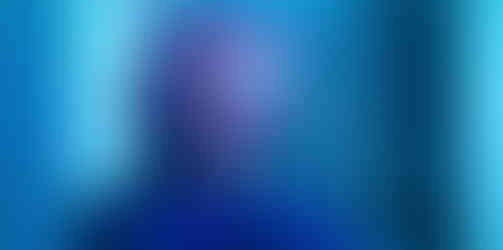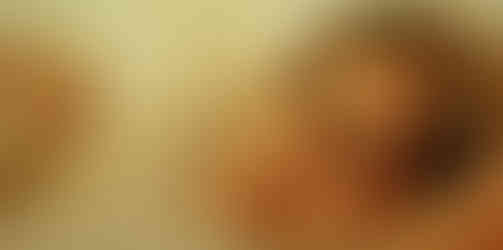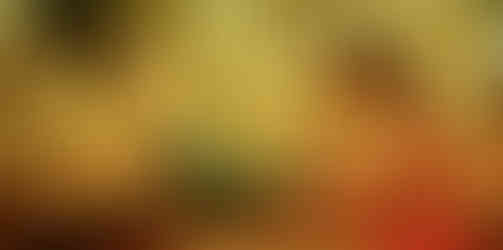The three who returned – “Little Buddha” 4K UHD
- Peggy Earle
- Sep 27
- 7 min read
4K ULTRA HD REVIEW / HDR SCREENSHOTS
Three young children, right, Jesse (Alex Wiesendanger) from the U.S., Gita (Greishma Makar Singh), and Raji (Raji Lal), could be the reincarnation of the great Buddhist teacher Lama Dorje. Keanu Reeves plays Prince Siddhartha.
(Click an image to scroll the larger versions)
“LITTLE BUDDHA”
4K Ultra HD & Blu-ray; 1993; PG, with some disturbing images
Best extra: Commentary by film critic Bilge Ebiri
THE LATE Bernardo Bertolucci, brilliant and versatile director of “The Conformist,” “The Last Emperor,” and “The Sheltering Sky,” among many others, made “Little Buddha” with children in mind. The epic masterpiece, however, which was filmed on location in Bhutan, Nepal and Seattle, Washington, is not just for children. Yes, children feature heavily in the movie, and much of it is a kind of childlike storybook approach to the life of the Buddha, but adult themes – e.g., faith, life, death, and the relationship between fathers and sons – are also prominent throughout.
Starring Bridget Fonda, Chris Isaak, Ruocheng Ying, and Keanu Reeves (as you’ve never seen him before or since), “Little Buddha,” in a nutshell, is the story of a Tibetan monk’s search for the reincarnation of Lama Dorje, his beloved teacher. The search takes the monk, Lama Norbu (Ying) to Seattle, to meet a little blonde boy named Jesse (Alex Wiesendanger), who was born at the same moment that Lama Dorje died. Naturally, Jesse’s parents, Dean and Lisa (Isaak and Fonda) are taken aback, and initially reject what Lama Norbu tells them. But eventually, Dean agrees to take Jesse to Asia, if for no other reason than to have a once-in-a-lifetime adventure.
(1&2) Lama Norbu (Ying Ruocheng), teaching at the Buddhist monastery in Bhutan, bids farewell to a fellow monk before leaving for the U.S. (3) Norbu and his travel party arrive in Seattle, on their way to find an 8-year-old boy. The majority of the U.S. scenes were captured with a blue filter. (4) Dean Conrad (Chris Isaak) and his wife Lisa (Bridget Fonda) discuss their son Jesse with the monks. (5) Jesse appears in a rat mask he created. (6) Norbu and the monks leave after gifting Jesse with a book about Prince Siddhartha.
Interspersed with the modern narrative is the tale of Siddhartha (Reeves), raised in opulence as a prince, and completely sheltered from the realities of life in ancient India. As an adult, Siddhartha finds a way to escape the palace walls and soon discovers the world contains disease, death, poverty, and suffering. The story follows his decision to cast off his wealth and seek enlightenment, so that he could help humanity – ultimately becoming the Buddha.
This Kino Lorber 4K Ultra HD and Blu-ray presents the film in its 140-minute “International Cut,” unlike the 20-minute shorter version first released in American theaters. It is an absolute delight, a feel-good film without being cloying or overly sentimental, rewarding viewers with its gorgeous location cinematography, rich production design, and colorful costumes.
VIDEO/AUDIO
A title slide details the 4K restoration handled at Rome’s Cinecittà post-production facility, via the second-generation 35mm “separation masters” supervised by Italian cinematographer Vittorio Storaro (“Apocalypse Now,” “Reds,” “The Last Emperor”). For some reason, the original aspect ratio of 2.39:1 was modified to 2.00:1 (slightly cropping on the left and right), while one shot was squeezed horizontally to ensure every character was within the frame.
Storaro captured the modern-day scenes with 35mm film, mounted with anamorphic lens, while the Siddhartha flashback scenes were captured with the larger 65mm film stock for added clarity and the impression of a peaceful world.
Overall, the HDR10 and Dolby Vision grading seems to be too bright; maybe that’s the intent, while the shadows are grayish, not inky black. The natural film grain is quite evident throughout. For the majority of the time, the onscreen clarity is very good for a second-generation source. The film varies wildly with its color toning, bathed in warm tones from Bhutan and Nepal, while Seattle U.S.A., has a mostly cold bluish cast.
The imagery is still gorgeous, but the aspect and the brightness are off-balance.
A previous six-channel DTS-HD soundtrack has been ported over, and the results are dynamic and full of high fidelity, with the dialogue front and center. While Ryichi Sakamoto’s (“The Last Emperor,” “Revenant”) orchestrated score has excellent response.
(1&2) As Lisa reads to Jesse, the book is dramatized, showing a pregnant Indian princess traveling with her entourage. (3&4) She gives birth to a boy, Siddhartha, and the baby displays extraordinary abilities. (5) The king celebrates his newborn son.
EXTRAS
The enclosed Blu-ray houses three archive featurettes (1994) and the informative commentary:
“Making of Little Buddha” (15 mins.) with interviews from Bertolucci and Reeves.
Interview with Director Bernardo Bertolucci (7 mins.)
Interview with Producer Jeremy Thomas (15 mins.)
“New Commentary with film critic Bilge Ebiri” – who calls “Little Buddha” a “splendid, gorgeous epic … about spirituality” that opens playfully, with “Once upon a time … “Because it was so different from Bertolucci’s previous films, “no one knew what to make of it.” He notes the director had been previously interested in Buddhism, which coincided with Hollywood’s New Agey period, when Eastern philosophy held “great appeal to Western intellectuals.”
He adds that Bertolucci was so clearly in love with all the ritual … (he) wanted to immerse us in the beauty of this world.” Many of the locations were known to be extremely difficult, if not impossible, for filmmakers’ to get permission for shooting, such as the monastery in Bhutan where much of the action takes place. Ebiri later explains that Bertolucci succeeded because he had a certain “street cred,” and that he and producer Jeremy Thomas were seen as “not typical Western filmmakers or Hollywood rich dudes.”
(1) Prince Siddhartha, attended to by palace servants. (2) Siddhartha and his beloved, Yasodhara (Rajeshwari Sachdev). (3) The prince plays a lively game with his friends. (4) At his insistence, he’s allowed to leave the palace, accompanied by his servant, Channa (Santosh Bangera). (5) Eventually, Siddhartha begins to see the realities of illness and poverty beyond the palace walls.
Local authorities felt that the director would “do right by their values.” He cast many actual Tibetan monks and lamas in the film, except for Ying, who was one of China’s most acclaimed actors and not even a Buddhist. Ying, who died in 2003, and had served time in prison during the Cultural Revolution, played a large role in “The Last Emperor,” as well, and Ebiri said it was difficult for him to be allowed to leave China to work on “Buddha.” Bertolucci knew that other cinematographers had problems shooting in India, so he decided to locate all the India scenes in Nepal.
Regarding the casting, Ebiri points out the “controversial choice” of Reeves to play Siddhartha, about whom “the jury was out as to whether he could even act.” Bertolucci had seen Reeves in “My Own Private Idaho,” and noted the “innocence shining on his face.” Reeves is part-Hawaiian and of Chinese descent which, says Ebiri, gave him a “beauty that’s neither Eastern or Western.” And, naturally, having a Hollywood star in the film “helped make the movie bankable.” Reeves fasted for several weeks to lose weight for the scenes in which Siddhartha becomes an ascetic, living on virtually nothing but oranges, according to the actor.
“Little Buddha” was released the same year as the action blockbuster “Speed,” after which Reeves’ career really “took off.”
Ebiri mentions how Storaro, who worked on most of Bertolucci’s movies, was “influenced by the Renaissance,” and was “unafraid to use filters, such as the very noticeable blue one in all the scenes shot in Seattle.”
Sakamoto, who composed the score, and “The Last Emperor” and “Sheltering Sky,” was an “electronica pioneer.” Ebiri calls the “Buddha” score “grand but simple … he was “the perfect composer for the film … it was “one of his best works.”
(1) In Seattle, Dean talks to Lama Norbu about the possibility of Jesse going to Asia. (2) A man with leprosy, one of the many signs of suffering Siddhartha encounters. (3&4) Siddhartha’s transformation begins.
Ebiri explains that “Buddha” was the last of Bertolucci’s “unofficial Eastern trilogy,” which began with “The Sheltering Sky,” and followed by “The Last Emperor.” The trilogy, says Ebiri, began with “despair” and ended with emerging “on the other side.” “Little Buddha,” he adds, “reflects a time when Americans were curious, and not suspicious, about the rest of the world,” which drastically changed after the terrorist attacks of September 11th.
Ebiri shares lots of interesting trivia throughout his commentary, including that Reeves had trouble sitting for very long in the lotus position, so for one of the lengthy scenes, holes were cut underneath him for his legs to go through, and fake legs were used. There was a backlash from Buddhists to the word “little” in the film’s title — but Bertolucci was able to consult the Dalai Lama himself, who loved the movie and gave his wholehearted approval of the title.
Some Buddhists also objected to the idea of three children all being reincarnations of Lama Dorje, but Ebiri says it was done to avoid even greater objection, if the reincarnation had just been one Caucasian American boy. Ebiri explains what later happened in the lives of the three child actors: Wiesendanger (Jesse) became a community organizer in Washington state; Greishma Makar Singh (Gita) became an executive for the Coca-Cola company; and, sadly, Raju Lal (Raju), who had first been discovered on the streets of Nepal shining shoes, went back to a life of poverty.
— Peggy Earle
(1) The three children who bear signs of being Lama Dorje’s reincarnation. (2) Siddhartha, who has become the Buddha, resists temptation by evil forces. The shot was vertically stretched to ensure every character was in the frame with the reformatted aspect ratio. (3) The children play under a Bodhi tree, where the Buddha received enlightenment. (4) Lama Norbu tells Jesse he’s the reincarnation, along with the other two children. (5&6) The three children take part in a celebratory ceremony.
SPECS:
100 GB disc
TRUE 4K mastering
35mm Technovision 2.39:1 aspect and the flashback 65mm 2.21:1 aspect, but Storaro modified the aspect to 2.00:1 with some cropping
Video bitrate: Varies from around 50 Megabits-per-second to 80 Mbps. A running time of 140 minutes – International Cut.
HDR10 maximum light level: 5572 nits
Max frame average light level: 236 nits
Box office: $4.8 million domestically, $48 million worldwide, and with a production budget of $35 million. Finished the year in North America as the No. 151 box office film of the year with 1.1 million tickets sold. “Forrest Gump” was No. 1 with 73 million tickets sold.
Rotten Tomatoes: Critics – 63 percent, Moviegoers - 53 percent
Metacritic: 57 percent
























































